- We’re open today from 12 pm to 5 pm
- Purchase tickets
- Join mailing list
- Join as a member
- Donate
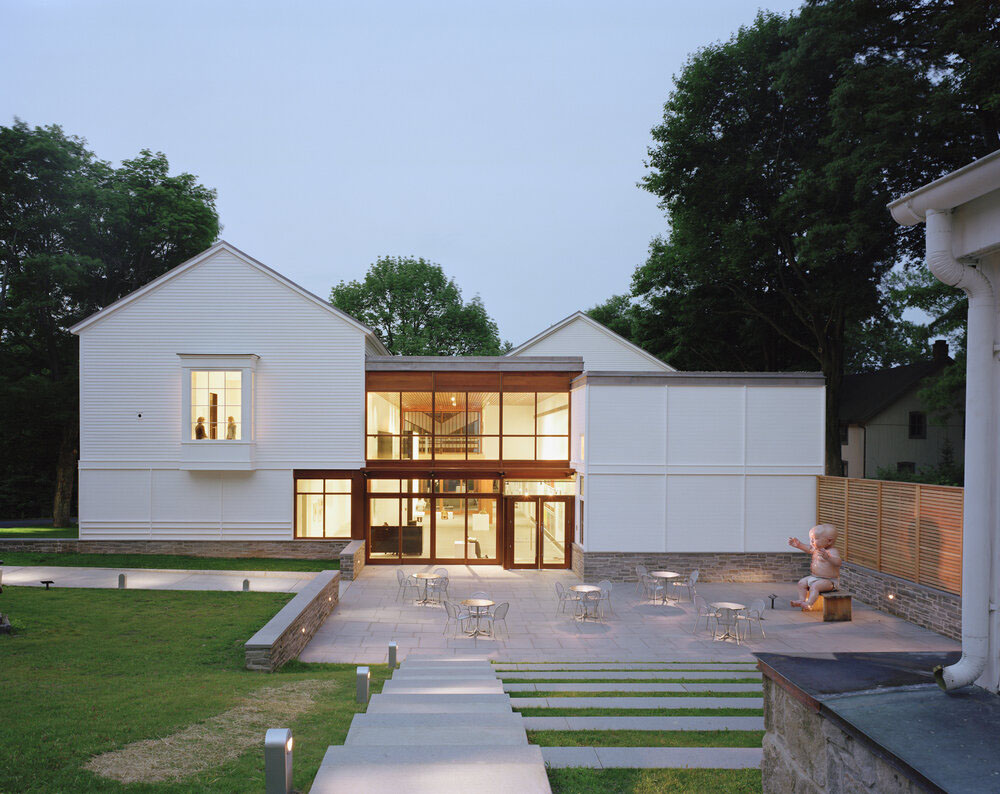
About The Aldrich
Founded by art collector and fashion designer Larry Aldrich in 1964, The Aldrich Contemporary Art Museum is one of the oldest contemporary art museums in the United States. The Museum is one of the few independent, non-collecting institutions in the country and the only museum in Connecticut solely dedicated to the presentation of contemporary art.
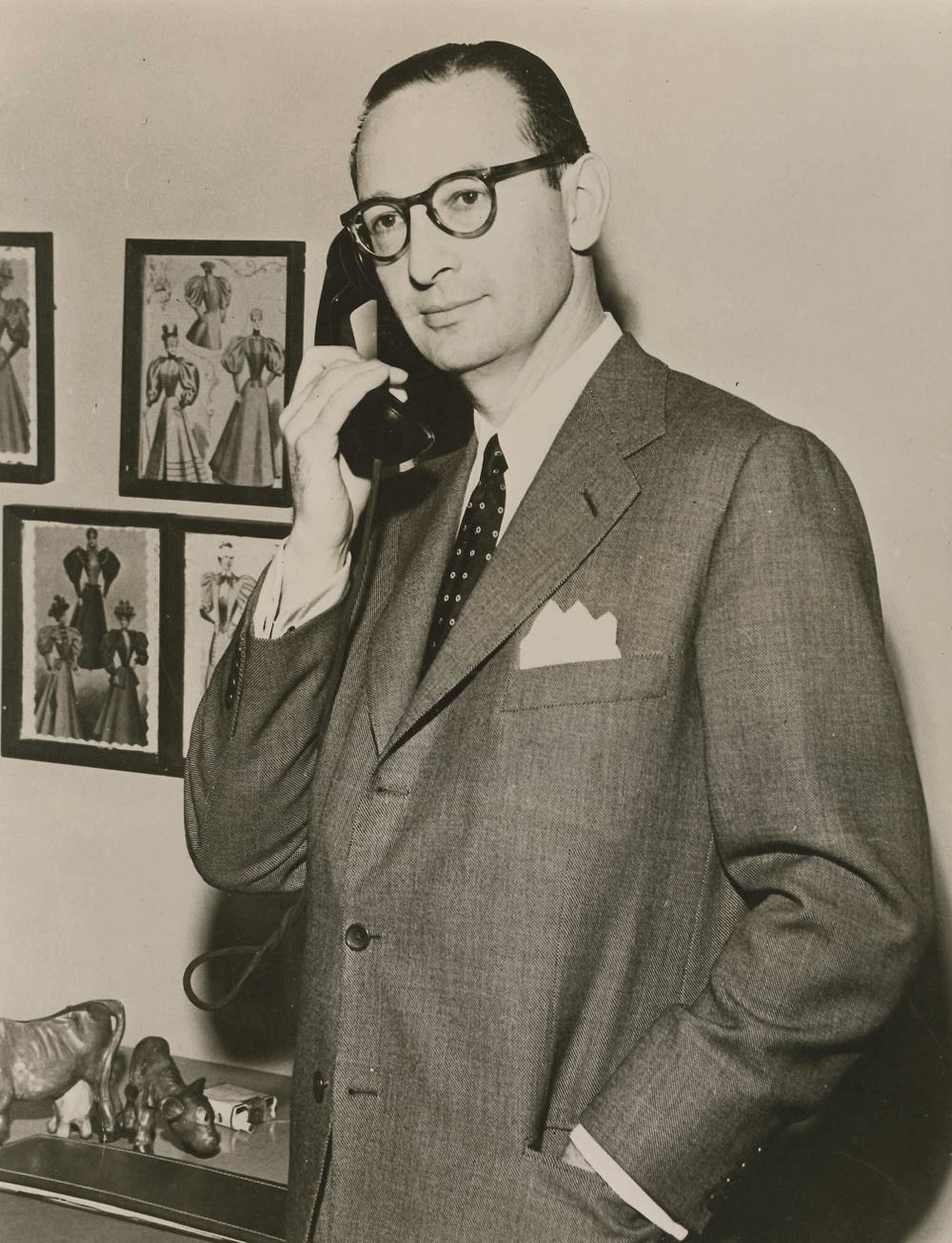
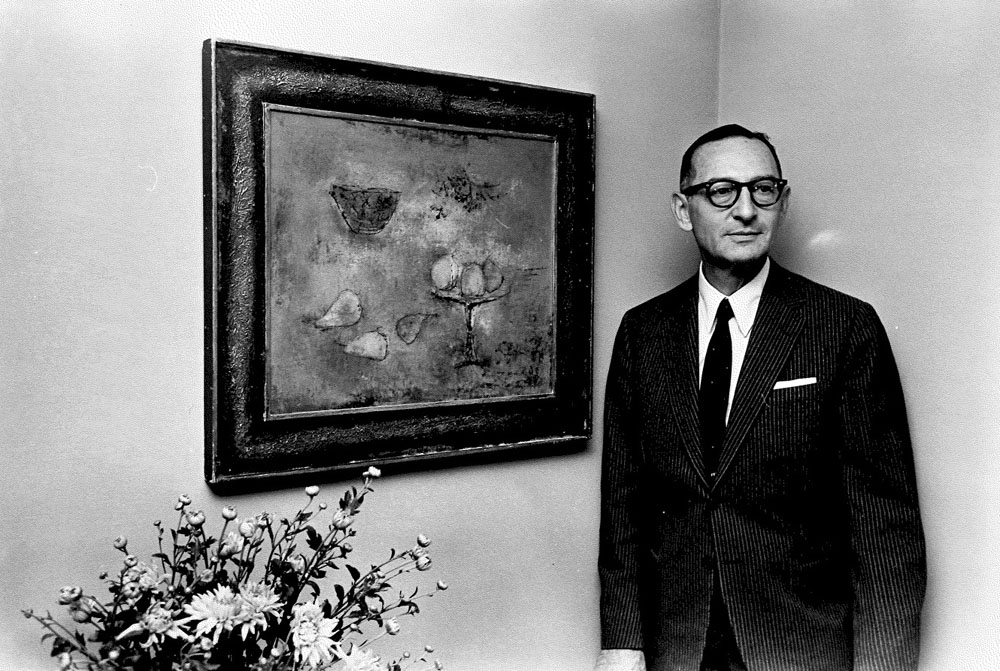
Larry Aldrich (1906–2001) was an American fashion designer, art collector, and founder of The Aldrich Contemporary Art Museum. Born with the surname Orlevitch to Russian Jews who immigrated to New York in 1897, he was set to study law at Columbia University but withdrew to pursue a career in fashion when he found success as a dress seller. In advance of his first presentation he changed his name and debuted an eponymous label on March 13, 1927. Throughout the 1930s he traveled to Paris three times a year to survey new dress styles, while also making an effort to see art in galleries and museums.
In 1940 he married Wynn Payne, a painter, and together they moved to Ridgefield, Connecticut. She encouraged him to deepen his interests in art through books. In 1947 they traveled to Paris and acquired paintings by Impressionist and Post-Impressionist painters. Some of the first artists to enter his collection were Paul Utrillo, Pierre-Auguste Renoir, Édouard Manet, Raoul Dufy, Jacques Villon, and Édouard Vuillard,among others. In 1951 Aldrich bought suites of paintings by Maria Helena Vieira da Silva and Zao Wou-Ki, marking his first acquisitions of contemporary art by living artists. By 1953 the Aldrichs had amassed a collection that filled their Ridgefield estate, Manhattan apartment, and his label’s showroom. Aldrich was courted by curators who sought his help to build museum collections. In 1958 he established an acquisition fund at The Museum of Modern Art, followed by a similar fund at The Whitney Museum of American Art in 1963. He stipulated that no more than $1000 be spent on any single work so that the curators would be compelled to consider works by artists who were not yet well known. This led to the accession of work by David Diao, Agnes Martin, Frank Stella, and Tom Wesselmann, among others. In the late fifties Aldrich also established a commissioning program through his fashion label that savvily associated his business with the New York avant-garde. The selected artist would receive pride of place within his showroom, and he would gift the commissioned paintings to important clients.
In 1963 Aldrich auctioned works from his collection dated from before 1950. This strategic move allowed him to refocus on acquiring contemporary art, and to pursue the dream of establishing a permanent home for the collection that now included artists representative of post-war styles like abstract expressionism, minimalism, op art, and pop art. He purchased the “Old Hundred,” an 18th century historic building, on Main Street in Ridgefield and after an extensive restoration he re-opened it as The Larry Aldrich Museum in 1964. The opening exhibition featured seventy-five artists including Jean Dubuffet, Jane Freilicher, Alberto Giacometti, Leon Golub, Grace Hartigan, Robert Indiana, Ellsworth Kelly, Bridget Riley, Antoni Tàpies, and Jack Youngerman. The property included a study library in the museum building and a sculpture garden in the rear. Throughout the 1960s the Aldrichs organized three collection exhibitions and one special exhibition each year. Mr. Aldrich spent weekdays in New York running his business, and the organization and management of the museum was helmed by Mrs. Aldrich, who referred to the endeavor as “Larry’s Folly.”
In 1966 he sold his company and retired from the fashion industry. The following year the institution was renamed The Aldrich Museum of Contemporary Art and Aldrich invited Alfred Barr, Joseph Hirshhorn, Philip Johnson, and Vera List—esteemed collectors and titans of post-war American culture—to join the museum’s leadership as trustees. Barr, founding director of The Museum of Modern Art, and his successor Rene d'Harnoncourt both suggested that Aldrich reorient the museum towards exhibiting underrepresented contemporary artists rather than showing his own collection, and so he did.
In 1973 he founded the SoHo Center for Visual Arts on Prince Street in New York City: a non-profit exhibition space restricted to artists who had never had a solo show or gallery representation. It provided a platform for artists like Jack Whitten, Mary Obering, Kikuo Saito, Joan Semmel, Kay Walkingstick, Stanley Whitney, and Anita Steckel. The SoHo Center for Visual Arts had an adjoining library with more than 10,000 volumes that was open to the community free of charge. Aldrich operated the two institutions in tandem with each other, using them as recruiting grounds and incubators for new talent. When The SoHo Center for Visual Arts closed in 1990 its extensive art publication library was given to The New Museum.
In 1991 Aldrich established the Larry Aldrich Award to honor artists who made significant contributions to contemporary art with a solo exhibition at the museum and cash prize. The inaugural award was given to Elizabeth Murray. Subsequent awardees include Bruce Nauman, Robert Gober, Janine Antoni, Elizabeth Peyton, Mark Dion, and Fred Wilson.
Aldrich remained an active member of the Museum’s Board of Trustees until his passing in 2001. The Aldrich family remained active in the museum after his death. His daughter, Georganne Aldrich Heller, serves as an Honorary Trustee of the Museum today.
The Aldrich is internationally recognized for its artist-centric programs and visionary exhibitions. We present first solo museum exhibitions by emerging artists, significant exhibitions of established artists, and thematic group exhibitions.
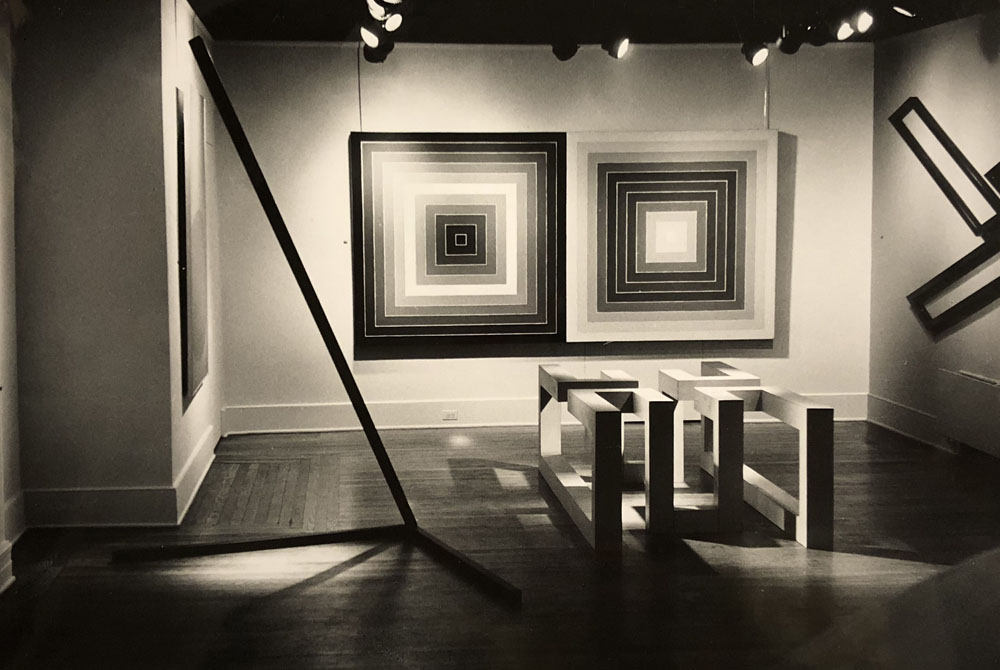
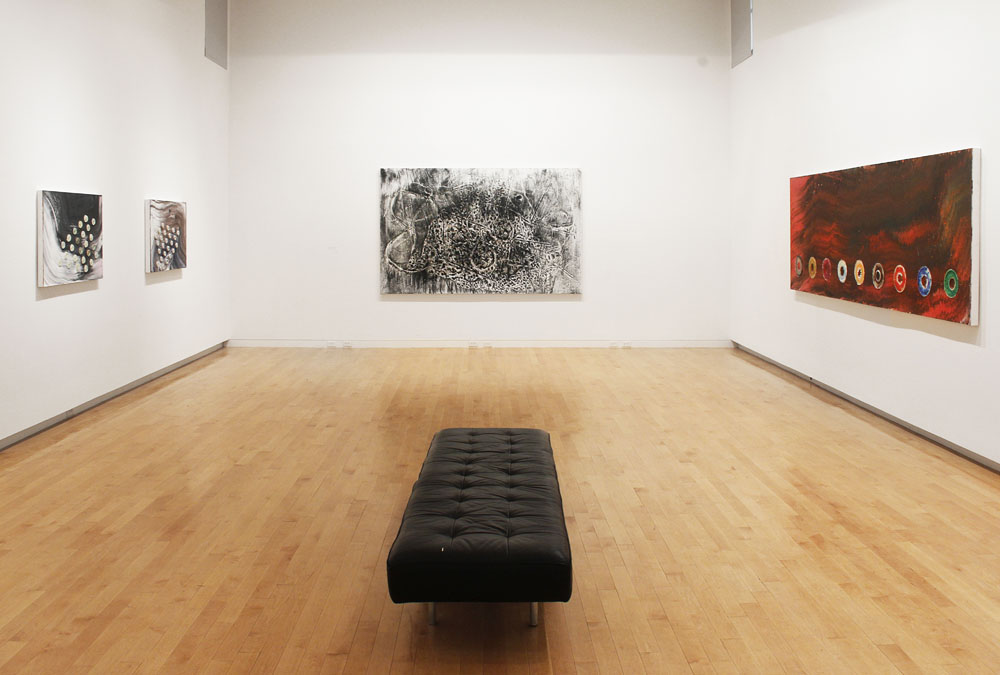
Throughout the Museum’s history, we have been among the first to exhibit now-acclaimed artists in group shows such as Frank Stella (1965), Robert Smithson (1966), Eva Hesse (1969), Jack Whitten (1972), Jean-Michel Basquiat (1983), Cindy Sherman (1986), Robert Gober (1988), Kerry James Marshall (1996), and Jeffrey Gibson (2006), among many others.
In addition, the Museum has consistently presented the first solo museum exhibitions of artists who have gone on to have renowned careers, including Olafur Eliasson, Huma Bhabha, KAWS, Michelle Lopez, B. Wurtz, Ruth Root, Hayal Pozanti, David Scanavino, David Brooks, and Eva LeWitt. We have also presented the first career surveys of Harmony Hammond, Jackie Winsor, Suzanne McClelland, and Mark Dion, to name a few, and newly commissioned projects by Virginia Overton, Michael Joo, Jessica Stockholder, and Xaviera Simmons. Pictured at right: installation views from Cool Art (1968) in the “Old Hundred” building and Jack Whitten: Evolver (2014).
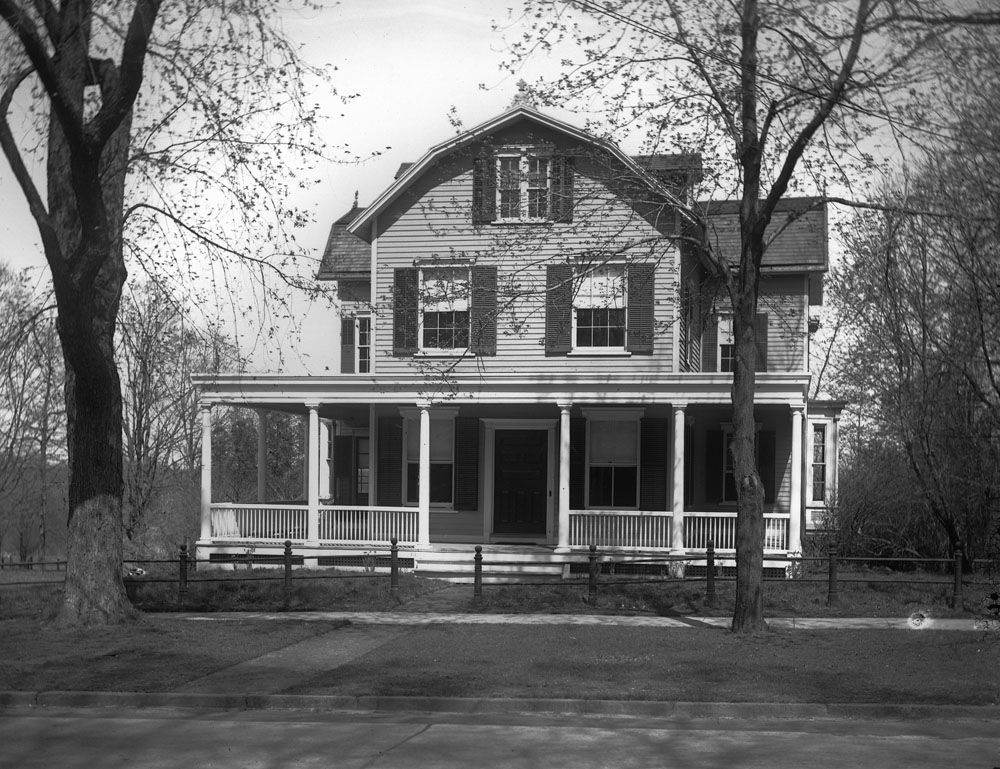
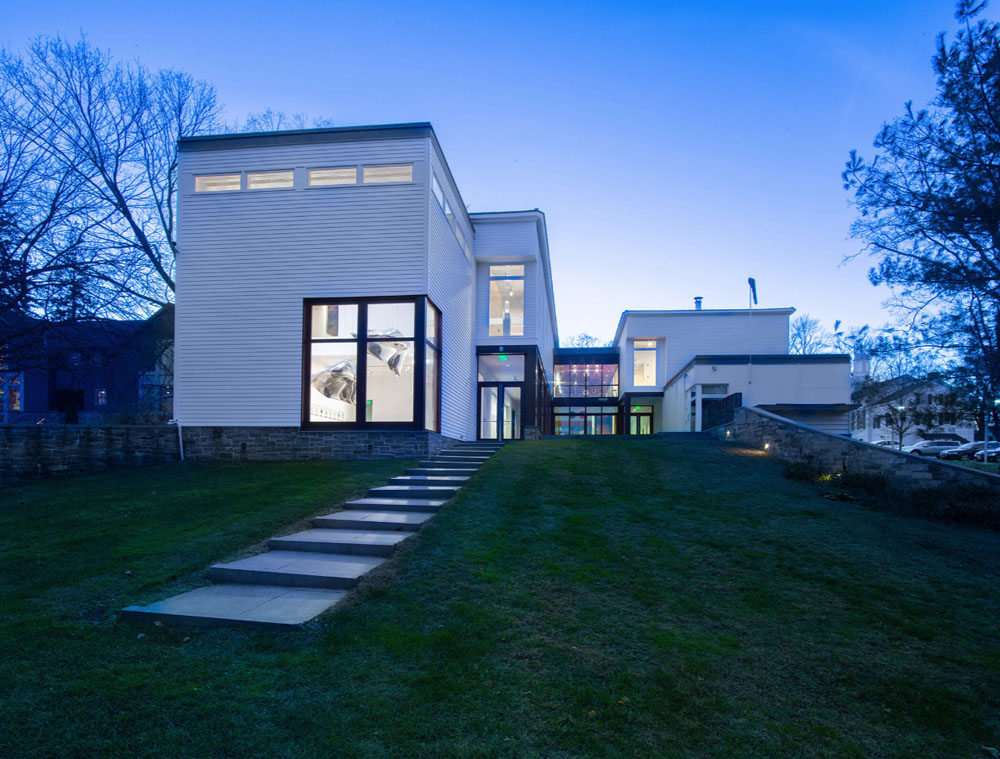
“Old Hundred”
The Museum was originally housed in the landmark “Old Hundred” building, which was built in 1783 and now functions as its administrative offices. The building was constructed in 1783 by Joshua King and James Dole, two lieutenants in the Revolutionary War, and was nicknamed “Old Hundred” because it served as a grocery and hardware store from 1783 to 1883, and as Ridgefield’s first post office. A descendant of Lieutenant King, Grace King Ingersoll, remodeled the building in 1883 and used it as her home. From 1929 to 1964, it had served as Ridgefield’s First Church of Christ, Scientist. From 1964 to 2003 “Old Hundred” housed The Aldrich Contemporary Art Museum’s galleries. Historic image of “Old Hundred” pictured at right.
Museum Building
Since 2004, The Aldrich has occupied a state-of-the-art 17,000 square-foot facility. In 2001, the Museum’s Board of Trustees, including Larry Aldrich, voted to build a new museum building. The architects were presented with the unique challenge of designing a contemporary art museum building within a colonial historic district. The new building, designed by Boston’s Tappé Associates, received a design award from the American Institute of Architects (AIA), New England. The Museum’s design pays tribute to the neighboring colonial vernacular architecture.
The Aldrich Contemporary Art Museum serves as a leading incubator for artists at critical creative junctures, providing a collaborative platform that engages and inspires.
Board of Trustees
Diana Bowes
Andrew J. Pitts
Linda M. Dugan
Julie Phillips
Claude K. Amadeo
Melinda Carroll
Eric Diefenbach
Gail Gluckman
Rachel Carr Goulding
Michael Joo
Patricia Kemp
Kristina Larson
Neil Marcus
Amy Pal
Rudy Shepherd
Rachel Sondheimer
Kathryn (KK) Streator
Vaughn C. Williams
Georganne Aldrich Heller
Kathleen O’Grady
Martin Sosnoff
Aldrich Council
Sonia Attkiss
Christine Boris
Michele Cotler Bronkesh
Julia Camilleri
Justin Christopher Carafotes
Courtney Christensen
Gigi Grussing
George Mueller
Sanford Nager
Ernest and Josie Newborn
Nicole J. Nigh
Roberto Redondo
Sonia Skindrud
The Team
Eduardo Andres Alfonso
Associate Curator
Email
Namulen Bayarsaihan
Director of Education
Email
Cailin Briggs
Development Assistant
Email
Jennifer Chun
Interim Marketing Manager
Email
Maria Damato
Education Manager
Email
Emily Devoe
Director of Marketing and Communications
Email
Karen Gallego
Visitor Experience Manager
Email
Holly Hart
Head of Membership and Events
Email
Kris Honeycutt
Director of Development
Email
Brian Kibler
Head of Installation and Facilities
Email
Gretchen Kraus
Design Director
Email
Katie Bassett Langin
Registrar
Email
Holly Lapine
Education and Access Specialist
Email
Cybele Maylone
Executive Director
Email
Gina Mello
Director of Finance and Administration
Email
Caitlin Monachino
Curatorial and Publications Manager
Email
Antonio Paone
Education Assistant
Email
Deborah Procino
Accountant
Email
Amy Smith-Stewart
Diana Bowes Chief Curator
Email
Barbara Toplin
Volunteer Archivist
Email
Educators
Lisa Canter
Museum Educator
Jennifer Chun
Museum Educator
Dayne Encarnacion
Museum Educator
Jennifer Gerometta
Museum Educator
Jane Harris
Museum Educator
Diana Lada
Museum Educator
Devin Long
Museum Educator
Cecilia Moy-Fradet
Museum Educator
Museum Attendants
Hollis Armstrong
Debby Carideo
Jack Coyle
Betsy Davidson
Georgie Eckley
Devin Long
Julia Matrejek
Bridget Pavalow
Nyla Sok
Opportunities
The Aldrich Contemporary Art Museum offers a wide range of rewarding and enriching ways to get involved! Central to The Aldrich’s mission is the encouragement of an ever-deeper understanding and enjoyment of contemporary art. Explore below to learn more about ways to contribute, including employment, internship, and volunteer opportunities.
Teaching Artist
Marketing Coordinator
Museum Attendant
Freelance Art Handler
Educator
The Aldrich does not discriminate on the basis of race, color, sex, sexual orientation, gender identity, expression and characteristics, age, religion, national or ethnic origin, visible or invisible disability, veteran status, or any other protected status.
The Aldrich Contemporary Art Museum does not accept unsolicited artist submissions or exhibition proposals, including physical and digital portfolios, and is not responsible for returning any materials sent to us.
Host an Event
Host your special event in a setting unlike any other in Fairfield County! Our galleries are home to an ever-changing presentation of contemporary art which provides a unique and stylish space for all types of events including cocktail receptions, birthday parties, rehearsal dinners, bridal or baby showers, corporate retreats, and non-profit benefits.
Our spaces range from intimate rooms to large-scale galleries, and a functional studio space.
Our on-site event planner will ensure your event is expertly executed and can assist you with all the details. Working with a select network of event professionals, we will create the perfect environment for your occasion.
When you choose to host your event at The Aldrich you also support the Museum’s mission to connect the community to the art and artists of our time.
For more information contact Holly Hart, Head of Membership and Events, at hhart@thealdrich.org, or 203.438.4519, extension 118.
All rentals must be deemed appropriate for the facility and must not interfere with the Museum’s function accessibility during public hours. Rental fees start at $2,500.



